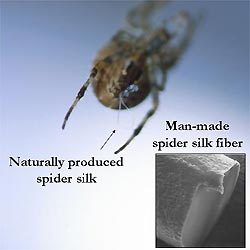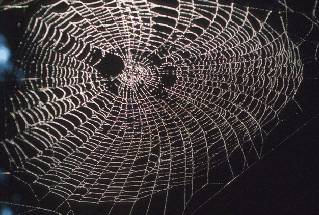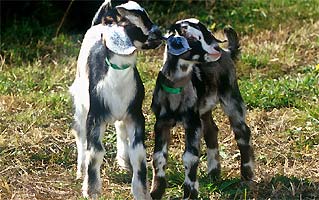
Nexia Biotechnologies Inc. and the U.S. Army Soldier Biological Chemical Command have reported in this week’s journal of Science that they have made the world’s first spider silk fibers from man-made materials with properties similar to natural spider silk.
Spider silk has long been admired by material scientists for its unique combination of high performance properties including toughness, strength, lightness and biodegradability. Nexia is developing recombinant spider silk, trade named BioSteel®, for applications in the medical, military and industrial performance fiber markets.
“Mimicking spider silk properties has been the holy grail of material science for a long time and now we’ve been able to make useful fibers,” said Jeffrey Turner, PhD, President and CEO of Nexia. “Having achieved this proof of principle, Nexia has now moved toward commercial development for multiple applications such as medical sutures, biodegradable fishing lines, soft body armor and unique material composites. Our strategy is two-fold: to produce large quantities of BioSteel® through our proprietary transgenic goat technology and to optimize spinning processes to create a diversity of spider silks with specific properties.”
The Science paper, titled “Spider Silk Fibers Spun from Soluble Recombinant Silk Produced in Mammalian Cells” (Lazaris et al., 2002-01-18. Science. Vol. 295:472-476) describes the production of a number of different dragline spider silk proteins via cell culture techniques using silk genes derived from two different species of orb-weaving spiders. The dragline spider silks from these species have been documented to be among the strongest silks reported. The monomer silk proteins from one of these species were spun from an aqueous solution to produce water-insoluble BioSteel® fibers. These fibers were tested for a number of mechanical properties and compared to natural spider silk. The researchers found that the spinning conditions used were adequate to produce fibers with mechanical properties similar to natural dragline spider silk including toughness and modulus, but had lower strength (tenacity) than natural spider silk. Toughness measures the amount of energy that the fibers can absorb before breaking and spider silks are among the toughest materials in the world. In effect, initial fibers of BioSteel® were able to absorb similar amounts of energy as natural spider silk by stretching farther. The fibers also had good water stability, orientation and were uniform in diameter.
“We believe the Science paper will be seen as a landmark article in spinning water stable fibers with good mechanical properties using an aqueous process,” said Jean Herbert, Leader, Materials Science Team at SBCCOM’s Natick Soldier Center. “We and others have been working on spider silk for considerable time and are thrilled finally to have the opportunity to spin synthetic silks and move the field towards real applications. The availability of Nexia’s water-soluble recombinant silk proteins has been a fundamental breakthrough in our ability to spin spider silk fibers.”
Scientists at the Natick facility are well-known for their expertise in high-performance fiber application development and their deployment of superior military, and often civilian, systems. The Natick Soldier Center has been working with Nexia under a Cooperative Research and Development Agreement (CRADA) since May, 1999 and the results are reported jointly in the Science paper.
“These results are remarkable,” said Costas N. Karatzas, PhD, Vice- President, Research & Development at Nexia and senior author on the Science publication. “First, we were able to produce monomers and spin fibers in an aqueous environment thereby mimicking the spider’s way of spinning silk, a process that has been perfected through 400 million years of evolution. Using these water-based BioSteel® solutions for large-scale fiber spinning would be considerably more environmentally friendly than using harsh solvents such as those used for most synthetic fiber manufacturing.
“Second, the material from mammalian cells was spun into fibers with significant toughness. Scientists have been successful in producing spider silk proteins in bacteria and yeast in the past, but for a number of reasons, have been unable to spin fibers with appreciable properties. Now with the availability of mammalian-derived BioSteel® fibers, we can begin to optimize the spinning process in order to tailor BioSteel® properties for a wide range of applications. We are grateful to the US Army team at Natick and our other collaborators for their expert guidance in this project,” added Dr. Karatzas.

Dragline silk, which comprises the radiating spokes of a spider web, exhibits a combination of strength and toughness unmatched by high-performance synthetic fibers. Dragline silk is three times tougher than aramid fibers and five times as strong, by weight, as steel. Dragline silk is composed of proteins with multiple repetitive sequence blocks that impart its mechanical properties. Spiders can be coaxed to make silk, but attempts to create “spider farms” have failed because of the territorial nature of spiders.
BioSteel® is eco-friendly both in terms of its composition and its production process. As opposed to most other synthetic fibers, BioSteel® is expected to be biodegradable over time in the presence of water making it a promising material for such applications as medical sutures and fishing lines. Additionally, the aqueous production process has the potential to be non-polluting and environmentallyfriendly in contrast to the manufacturing of other synthetic fibers.
“It’s incredible that a tiny animal found literally in your backyard can create such an amazing material by using only amino acids, the same building blocks that are used to make skin and hair,” added Dr. Turner. “Spider silk is a material science wonder – a self-assembling, biodegradable, high- performance, nanofiber structure one-tenth the width of a human hair that can stop a bee traveling at 20 miles per hour withoutbreaking. Spider silk has dwarfed Man’s achievements in material science to date.”

Nexia has exclusive, worldwide rights to broad patents covering spider silk genes and proteins and is in the process of developing commercial quantities of spider silk using its proprietary transgenic goat technology. Nexia has developed a number of male and female BioSteel® founder goats. Males are being used to expand the herd and females will begin producing milk in the second quarter 2002 to provide increasing quantities of BioSteel® for spinning process optimization, product development and commercialization.
Quelle: www.netcomposites.com vom 2002-01-18.
(Vgl. auch Meldungen vom 2001-10-26 und 2001-06-01)
Source
www.netcomposites.com vom 2002-01-18.
Share
Renewable Carbon News – Daily Newsletter
Subscribe to our daily email newsletter – the world's leading newsletter on renewable materials and chemicals










